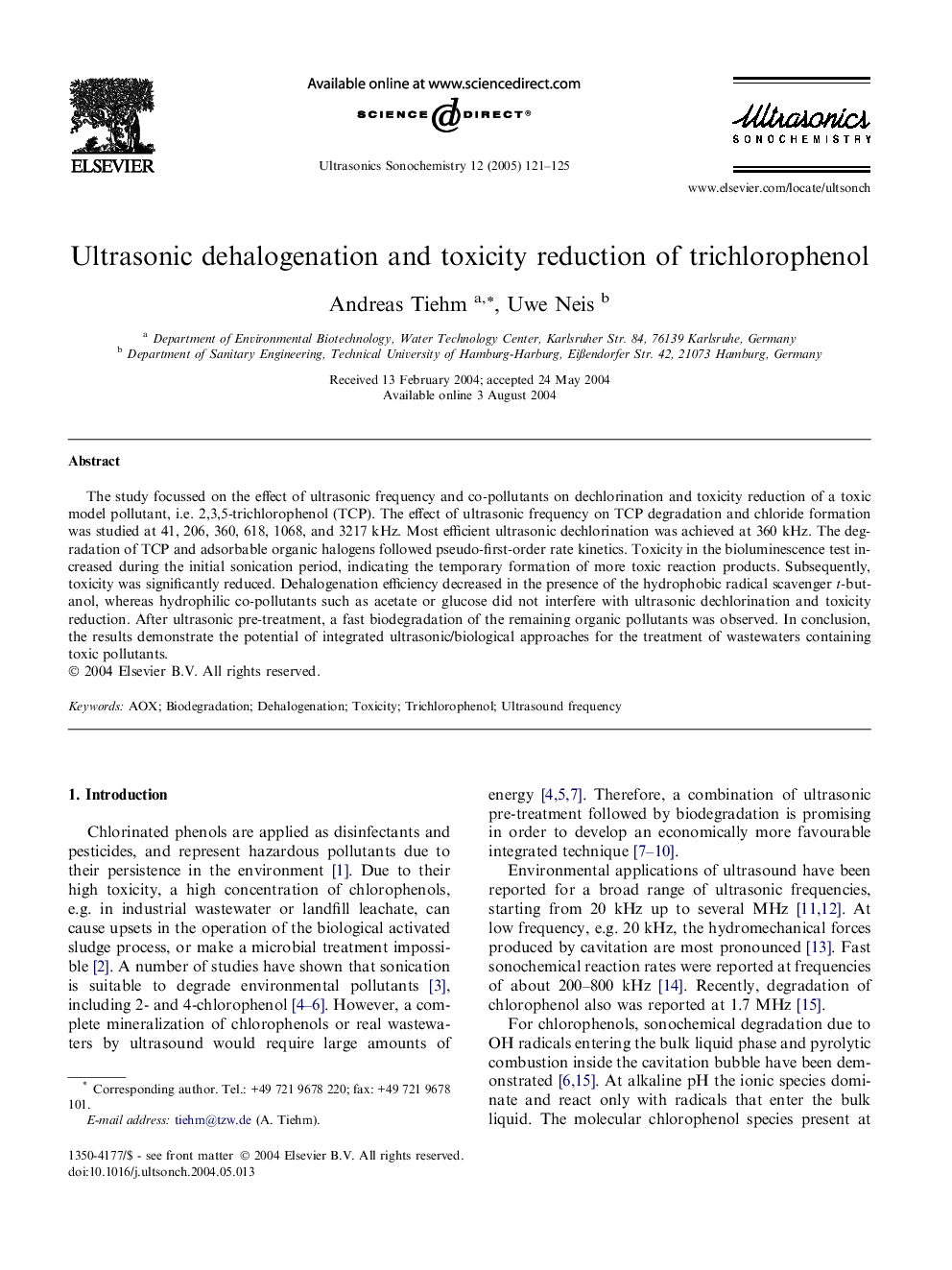| کد مقاله | کد نشریه | سال انتشار | مقاله انگلیسی | نسخه تمام متن |
|---|---|---|---|---|
| 9758858 | 1496884 | 2005 | 5 صفحه PDF | دانلود رایگان |
عنوان انگلیسی مقاله ISI
Ultrasonic dehalogenation and toxicity reduction of trichlorophenol
دانلود مقاله + سفارش ترجمه
دانلود مقاله ISI انگلیسی
رایگان برای ایرانیان
کلمات کلیدی
موضوعات مرتبط
مهندسی و علوم پایه
شیمی
شیمی (عمومی)
پیش نمایش صفحه اول مقاله

چکیده انگلیسی
The study focussed on the effect of ultrasonic frequency and co-pollutants on dechlorination and toxicity reduction of a toxic model pollutant, i.e. 2,3,5-trichlorophenol (TCP). The effect of ultrasonic frequency on TCP degradation and chloride formation was studied at 41, 206, 360, 618, 1068, and 3217 kHz. Most efficient ultrasonic dechlorination was achieved at 360 kHz. The degradation of TCP and adsorbable organic halogens followed pseudo-first-order rate kinetics. Toxicity in the bioluminescence test increased during the initial sonication period, indicating the temporary formation of more toxic reaction products. Subsequently, toxicity was significantly reduced. Dehalogenation efficiency decreased in the presence of the hydrophobic radical scavenger t-butanol, whereas hydrophilic co-pollutants such as acetate or glucose did not interfere with ultrasonic dechlorination and toxicity reduction. After ultrasonic pre-treatment, a fast biodegradation of the remaining organic pollutants was observed. In conclusion, the results demonstrate the potential of integrated ultrasonic/biological approaches for the treatment of wastewaters containing toxic pollutants.
ناشر
Database: Elsevier - ScienceDirect (ساینس دایرکت)
Journal: Ultrasonics Sonochemistry - Volume 12, Issues 1â2, January 2005, Pages 121-125
Journal: Ultrasonics Sonochemistry - Volume 12, Issues 1â2, January 2005, Pages 121-125
نویسندگان
Andreas Tiehm, Uwe Neis,